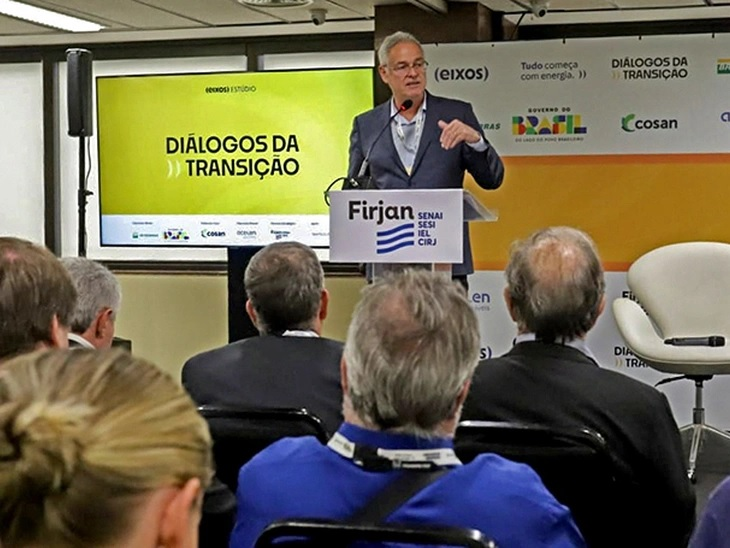By 2035+, Rio de Janeiro State’s Energy Potential Could Attract Over R$ 1 Trillion in Investments, Says Firjan
“Firjan’s Journey for Energy Transition in Industry” highlights confirmed and potential projects, reinforcing Rio’s leadership in diversifying Brazil’s energy matrix.
T&B Petroleum/Press Office Firjan23/10/2025 17:20

The state of Rio de Janeiro could surpass R$ 1 trillion in new energy sector investments if the potential projects identified by the Federation of Industries of the State of Rio de Janeiro (Firjan) are realized. This impressive figure reflects the state’s strong potential for capital investment by 2035 and beyond, reinforcing Rio’s role as Brazil’s main strategic hub for energy transition and integration.
The amount was mapped through Firjan’s Dynamic Energy Projects Dashboard (https://www.firjan.com.br/firjan/empresas/competitividade-empresarial/petroleoegas/integracao-energetica/), which highlights the state’s path toward energy diversification. Already leading in oil and gas production — with over 85% of Brazil’s total output — Rio de Janeiro is advancing in the adoption of low-emission technologies.
The data are part of “Firjan’s Journey for Energy Transition in Industry”, launched on Thursday (Oct 23) during the event “Transition Dialogues”, organized in partnership with Agência Eixos at Firjan’s headquarters. The publication brings together contributions from a range of market players involved in the challenges of energy transition in Brazil, alongside perspectives for Rio’s industrial sector.
Download the full study:
https://www.firjan.com.br/data/files/84/B5/69/8C/0B11A91031B91689D8284EA8/2025-10-Jornada%20Firjan-Transicao-Energetica.pdf
“In addition to the updated Dynamic Energy Projects Dashboard, the publication presents an overview of Rio’s potential energy landscape, consolidating assets and projects across multiple energy sources — operational, under construction, or still in the announcement stage. These are featured in the Energy Hub of Rio de Janeiro Dynamic Map. Altogether, more than a hundred projects were identified across oil and gas, energy, and naval industries,” said Firjan’s President Luiz Césio Caetano.
Throughout the publication, Firjan reinforces its Journey concept, emphasizing that the global energy sector’s transformation — toward more diversified sources and industrial decarbonization — is part of a dynamic ecosystem. “This process combines increased energy demand and business competitiveness with technological development, improved efficiency, enhanced energy security, reduced emissions, fulfillment of socio-environmental goals, and better quality of life,” said Karine Fragoso, Firjan’s General Manager for Oil, Gas, Energy, and Naval sectors.
Economic and Sectoral Impact
The realization of this multibillion-real project portfolio would have a transformative impact, generating highly skilled jobs and expanding the state’s industrial base. Rio’s journey includes the development of several energy sources: Offshore wind (12 companies have applied for licenses for 16 projects, with a mapped potential of 28 GW — roughly twice the capacity of Itaipu); Low-carbon hydrogen; Cogeneration; Nuclear energy (including Small Modular Reactors – SMRs); and The pioneering Carbon Capture and Storage (CCS) pilot project between Cabiúnas and São Tomé.
The articles compiled in “Firjan’s Journey for Energy Transition in Industry” reflect diverse perspectives on the future of energy, featuring insights from public and private stakeholders driving a cleaner and more resilient economy.
Among the contributors:
-
ANEEL underscores the power sector’s role in decarbonization and Brazil’s global leadership in the energy transition.
-
CCEE discusses challenges in expanding the free consumer market and Brazil’s potential to become a global leader by combining a renewable matrix with full market liberalization.
-
EPE presents the industrial sector as key to energy efficiency and to adopting technologies that can redefine production processes and open new markets.
-
ABDan and ABEN highlight the importance of nuclear energy — especially through SMRs — and its potential for desalination and hydrogen production.
-
COGEN emphasizes the role of cogeneration in ensuring energy resilience, particularly in high-demand sectors like data centers.
-
Enel advocates for a just, people-centered transition, focused on electrification, inclusion, and digitalization.
-
Engie positions natural gas as a strategic bridge toward a cleaner matrix, integrating existing infrastructure with future fuels such as biomethane and green hydrogen.
-
Light Energia highlights pumped-storage hydropower plants as essential for system flexibility and reliability.
-
Petrobras presents its Cabiúnas–São Tomé CCS pilot project, while Transpetro details emission-reduction efforts in maritime transport through biodiesel use and integrated logistics initiatives.
-
Finally, Mattos Filho law firm discusses regulatory advances and the need for new frameworks to govern emerging technologies such as CCUS and hydrogen.


